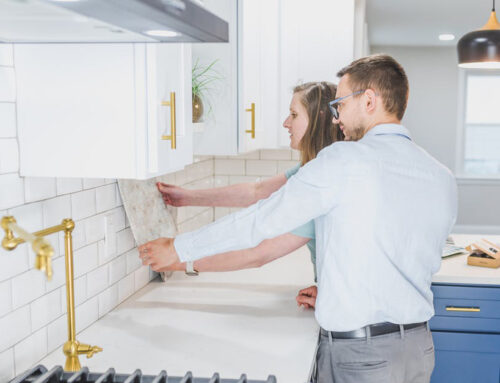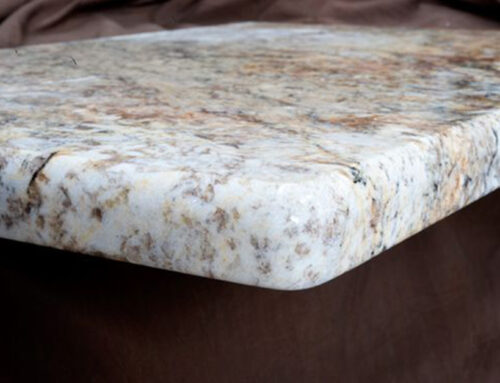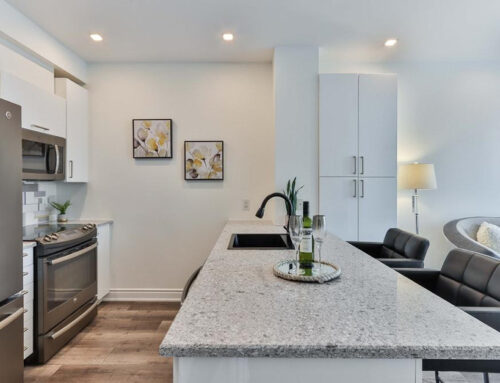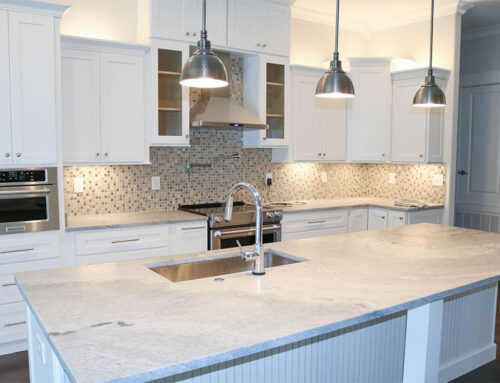Your kitchen is the one spot in your home where you’ll prepare food and meals regularly. For this reason, kitchen countertops need to be both durable and attractive. When it comes to mixing and matching custom countertops, you need to know what will work best for maintaining that luster if you decide to use a combination of materials.
Can you have different kinds of countertops?
If you’ve been following the latest trends in kitchen countertops for 2021, you’ll see a mixing of materials, both natural and engineered products. These include granite, quartz, quartzite, marble, and soapstone. Figuring out which to use can be as obvious as the desired hardness scale of your kitchen countertop. You might have an area designated for food prep, so that surface needs to be much more durable than others.
You may also have worries about temperature differences next to an oven or stove range, which doesn’t hold up well to thermal heating and cooling. Or the issues of acidic foods that can etch your surface and even stain others if not properly sealed.
That’s where different color countertops can be carefully added to give your kitchen design a unique look and feel. This might leave some of us wondering how it’s possible to mix countertops together…
How do you mix and match countertops?
With so many choices for kitchen countertops, many people forget about contrast. Balance dark with light. Think classic black and white. Or choose a palette of neutrals for a softer look. Based on your tastes in color and materials, there are endless combinations.
Countertop materials should complement cabinets, backsplashes, and preferred accent colors. You can further separate nooks and add more flair to the ledges of kitchen windows. These custom touches enhance the beauty of your countertops. All the more reason to mix textures, colors, and focal points in any kitchen!
Use your island as an accent piece. Commonly the main attraction in a kitchen, your island is the place to splurge! A kitchen island is meant for entertaining so impress your guests. Convey elegance with traditional marble or add drama with bold veining.
Guidelines for mixing different countertops
Keep it simple – stick to three or fewer countertop materials. You’ll want the combination of colors and surfaces to appear natural. Avoid materials that clash or are too busy when paired together. Don’t use opposing textures or internal grains that vie for attention.
A combination of materials that complements each other is the goal for a two-tone look. Mixing stone surfaces must follow a simple formula that’s narrowed down to similarities. You want patterns or markings that are alike, but not identical – think granite on your countertop and a quartzite or quartz backsplash.
Take cues from the color of your cabinets and kitchen accessories like fridges or stoves. What colors coordinate? Always think about the contrast level, which is the balance between dark and light or matte and shiny.
If there isn’t a balance between these opposing colors or patterns when you start planning to upgrade your countertops, you might not be pleased with the finished product. Consider getting some outside help in order to create the correct balance between stone patterns and colors.
Help with mixing and matching kitchen countertops
For most of us living in Austin, we know that having a stylish kitchen is a high priority. We’re all about DIY but, if after reading these tips you’re still unsure of how to mix and match countertops, seek help! Don’t risk making a costly mistake by just guessing and hoping for the best. That’s an expensive gamble.
Instead, get expert advice from Phoenix Stone & Laminate. With 35 years of collective experience, we know custom countertops. Phoenix Stone provides free quotes on installation. Skilled in color matching and material composition, we have the ideas, suggestions, and knowledge you’ll need to choose the perfect countertops for your kitchen.






